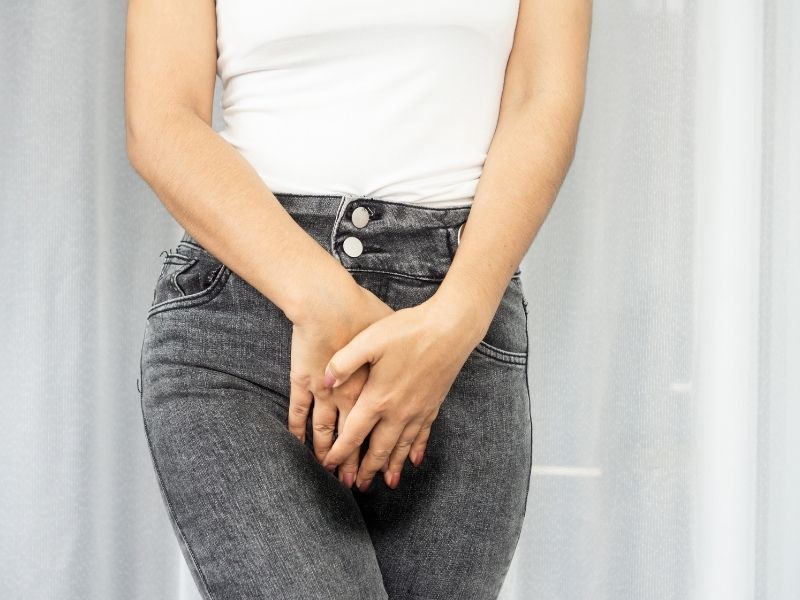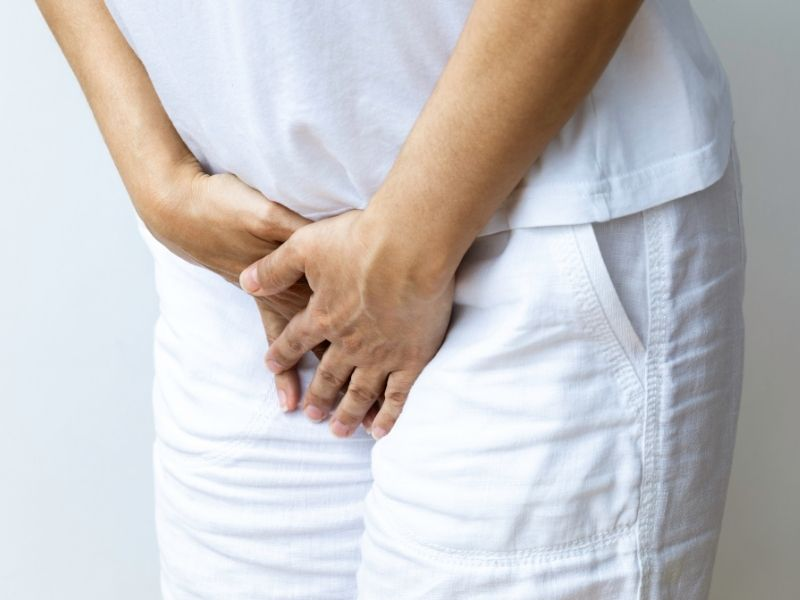Conservative Treatment
Commonly used methods are Kegel exercises, Biofeedback, FES and Magnetic treatment.
Kegel Exercise: The aim of this exercise is to strengthen the muscles in this region in order to take incontinence due to laughing, coughing and sneezing under control.
Learning How To Do The Exercise: Sit on the toilet bowl. Keep your legs in the normal relaxed position far from each other. After starting to urinate, try to hold your urine without moving your legs. Repeat if you cannot succeed in the first try. The group of muscles, the contraction of which you feel while holding your urine is the muscle group you are required to use during the exercise. In this way, you will have determined the movement to be done and muscles to be contracted during the exercise.
Application: After learning the movement that ensures the required muscle contraction correctly, contract these muscles and keep them contracted slowly counting up to 10. Then loosen the muscles and slowly count to 10 again when the muscles are loose. Continue doing the exercise repeating these procedures. Slowly increase these contraction periods in time and continue the exercise in a manner that there will be 50-75 contractions 3 times a day. If it is not convenient to count during the exercise, 15-20 minutes of exercise will suffice. You can see the efficiency of the exercise only after regular practice for 3-6 months.
Contribute to the exercise by contracting your muscles with maximum force for brief periods (not exceeding 2-3 minutes) from time to time during the day while you are practicing these exercises. Addition of these brief but intense contractions to the exercise will be useful to you with respect to preventing incontinence experienced while lifting heavy things, coughing and sneezing. These exercises prove more effective if you do then when you feel that your bladder is full. In other words, you muscles will become stronger when we practice exercises that are similar to the situations that lead to incontinence in your daily lives and help your muscles contract more efficiently when you really need them to.
Recommendations: You can do this exercises at any time of the day. It will be suitable if you allocate a specific period of time planned beforehand to these exercises everyday in order to practice them regularly and do not forget them. You can do this exercise while you are lying, sitting or standing. However, it will be better if you apply at least one of the three courses of treatment you will be applying everyday while you are standing. This is because incontinence takes place in your daily life mostly as you are standing. If you do not make any recovery in your incontinence problem despite months of exercise and treatment, then you have to be considered in a more advanced level.
Biofeedback therapy: Biofeedback therapy involves measurement of the physiological functions the pelvic floor muscles using electromyogram electrodes in women having urge type and/or stress type incontinence problems. Signals and information relating to the patient are recorded immediately and simultaneously and amplifying the symptoms when pelvic floor muscles get stronger or intraabdominal iliac muscles loosen. During bladder training, urinating routines of the patient are logged and the capacity of the bladder is expanded by gradually increasing the urinating intervals of the patient. General relaxation and pelvic muscle exercises must also be taught during biofeedback training.
Magnetic innervation: Pelvic floor muscles and nerves are stimulated with magnetic waves at intervals in treatment using magnetic waves, which is called magnetic innervation. Throughout the treatment, the patient feels his/her pelvic muscles contract and loosen. This stimulation increases urethral and anal sphincter functions, reduces bladder contraction and strengthens pelvic floor muscles.


Pharmacotherapy
Estrogens and medications called anticholinergic are most frequently administered. Medications must be tried on patients with stress and urge incontinences before surgery. Sometimes incontinence might decrease with surgery but surgery might exacerbate urge incontinence, as well.
Estrogen therapy: This therapy is favorable in women in the post-menopause period who have stress or urge incontinence. Vaginal estrogen therapy increases blood flow, lifts up the tissue maturation index of the vaginal mucosa and elevates maximum urethra closure pressure. 1-2 grams of estrogen is administered intravaginally for six weeks before bed and the follow-up dose is 2-3 times a week.
Anticholinergic drugs or tricyclic antidepressants: Urge and overflow incontinences in particular can be treated using these drugs. Anticholinergic drugs and tricyclic antidepressants increase the expansion and capacity of the bladder repressing involuntary contraction of the bladder. Tricyclic antidepressants also increase urethral closure pressure. Estrogen treatment is also helpful for patients with urge incontinence.
Surgical Treatment
Surgical treatment must only be administered in cases of stress incontinence and incontinence with sphincter insufficiency. The main principle of a surgical repair performed by a gynecologist is to raise the region where the bladder is connected to the urethra up to where it should be in the abdomen.
How Successful Are Urinary Incontinence Surgeries?
Likelihood of success of some operations developed today and which can even be performed under local anesthesia reaches up to 80-90%. Likelihood of success of the bladder lift operation through the vagina which was used in the past and has now been abandoned, on the other hand, is only 40%.
The most significant success factor is the selection of the right gynecologist and to have this kind of operations performed at the right address and by the right person.










METE İTİL
Appointment and Contact Form
You can ask us your questions or contact us to make an appointment.